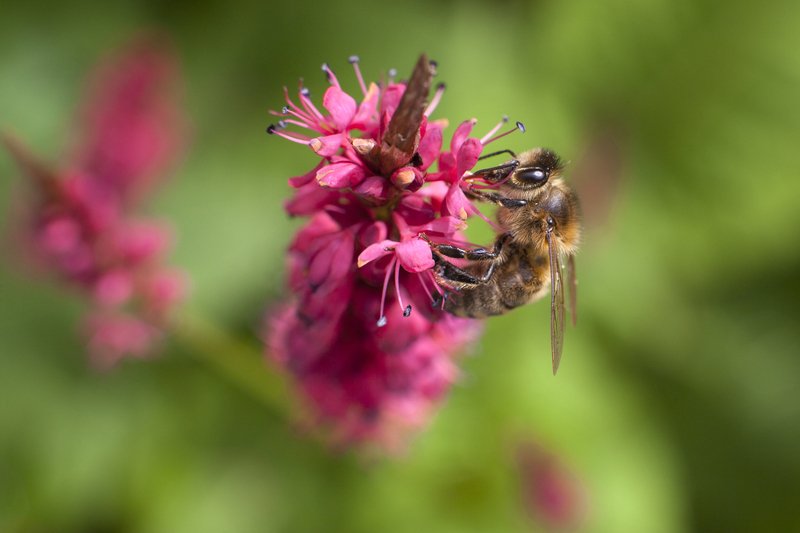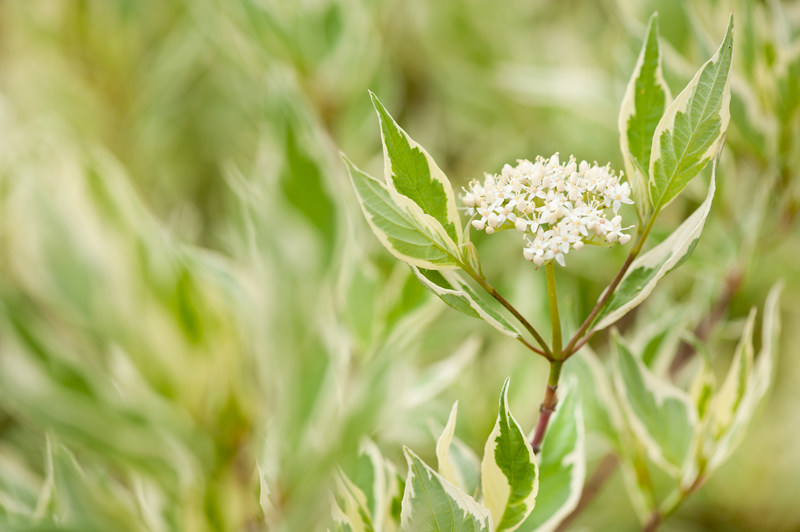Discover the essentials of container gardening
Posted on 18/08/2025
Discover the Essentials of Container Gardening: A Comprehensive Guide
Container gardening is more than a trend--it's a versatile and rewarding way to cultivate plants, no matter how much space you have. Whether you live in a cozy apartment, own a small balcony, or want to add vibrant accents to your garden, container gardening lets you bring nature closer to your daily life.
This guide will walk you through container gardening essentials: from choosing the right containers and soil, selecting suitable plants, understanding proper care techniques, to tips for a thriving and beautiful container garden.
What is Container Gardening?
Container gardening is the practice of growing plants in pots, tubs, boxes, or other containers instead of planting them in the ground. This gardening method is ideal for people with limited outdoor space or for those wishing to control growing conditions more precisely.
Why Choose Container Gardening?
- Flexibility: Easily move your plants to optimize sunlight or create different arrangements.
- Accessibility: Gardening can be enjoyed even in small urban settings, patios, rooftop terraces, or windowsills.
- Control: Manage your soil, water, and plant selection with more precision than with traditional darden beds.
- Versatility: Grow edible herbs, vegetables, flowers, succulents, or even small trees.
- Decoration: Instantly transform your environment, adding color and texture to any space with minimal effort.

Choosing the Right Containers
Proper containers form the foundation of successful container gardening. Let's explore what you need to know:
Types of Containers
- Clay or Terracotta: Classic for a reason; porous, providing good airflow but requiring more frequent watering.
- Plastic: Lightweight, affordable and retains moisture well--great for beginners.
- Ceramic or Glazed: Stylish and durable, ideal for indoor decorative container gardening.
- Wooden Planters: Rustic and natural-looking but may need lining to prevent rot.
- Fabric Grow Bags: Excellent drainage and air pruning, flexible and easy to move around.
- Metal: Modern but can heat up; better for cool-season plants.
Tip: Ensure all containers have adequate drainage holes to prevent waterlogging and root rot.
Container Size and Shape
- Depth: Deeper containers are better for root vegetables and large plants. A minimum of 12-18 inches is ideal for most vegetables.
- Width: Allows you to grow multiple plants or larger specimens.
- Shape: While round pots are common, rectangular and square options can maximize use of available space and create stunning group displays.
Selecting the Best Soil for Container Gardens
Soil is one of the most critical essentials of container gardening. Garden soil from the ground is too dense and can contain pests and diseases. Instead, use a high-quality potting mix.
What Makes a Good Potting Mix?
- Lightweight & Well-draining: Prevents compacting and water stagnation.
- Rich in Organic Matter: Compost or worm castings add nutrients from nature.
- Moisture Retention: Ingredients like peat moss or coconut coir keep roots hydrated.
- Aeration: Perlite or vermiculite ensures oxygen reaches the roots.
You may also buy specialty mixes--such as for succulents or orchids--designed for specific plant groups.
Picking the Perfect Plants for Your Container Garden
One of the joys of container gardening is its limitless plant choices. Here are plants especially suited for pots and planters:
Top Flowering Plants for Container Gardens
- Geraniums
- Petunias
- Impatiens
- Begonias
- Calibrachoa
- Marigolds
Edible Container Plants
- Tomatoes
- Basil, Mint, Parsley
- Peppers
- Strawberries
- Lettuce and Kale
- Radishes and Carrots (choose deeper pots)
Best Foliage and Houseplants for Containers
- Pothos and Philodendron
- Snake Plant
- Ferns
- Peace Lily
- Calathea
Consider your light levels (full sun, shade, or partial sun) and match plants accordingly for a thriving, beautiful container garden.
Essential Tools for Container Gardening
- Trowel: For digging and moving soil.
- Watering Can or Hose: With gentle spray, so you don't damage tender plants.
- Pruners/Scissors: For deadheading flowers and trimming growth.
- Gloves: Protect your hands while gardening.
- Fertilizer: Balanced liquid or slow-release granules to boost plant health.
Planting Your Container Garden: A Step-by-Step Guide
-
Choose Your Container:
Pick a container that suits your plant's size and root depth requirements. -
Prepare the Container:
Check for drainage holes. Add a layer of stones, gravel, or broken pottery at the bottom if desired. -
Add Potting Mix:
Fill with potting mix, leaving 1-2 inches of headspace at the top. -
Arrange Your Plants:
Loosen root balls and position plants. Group 'thrillers' (upright), 'fillers' (bushy), and 'spillers' (cascading) for stunning visual effect. -
Fill and Water:
Fill the remaining space with more potting mix, gently press down, and water thoroughly.
Watering and Feeding: The Secrets to Healthy Container Plants
Watering Tips
- Check Moisture: Stick your finger 1 inch into the soil; water if it feels dry.
- Early or Late: Water in the morning or evening to minimize evaporation.
- Avoid Overwatering: Roots need air as much as water--never allow pots to sit in standing water.
- Crucial in Hot Weather: During summer, container gardens may need daily watering.
Feeding and Fertilizing
- Regular Feeding: Container plants exhaust nutrients faster, so fertilize every 2-4 weeks during the growing season.
- Pick the Right Fertilizer: Use balanced liquid fertilizer or slow-release granules suited for your plants.
Container Garden Design Ideas
The possibilities for container gardening designs are endless. Here are some inspiring ideas to get you started:
- Herb Tower: Stack pots or use a tiered planter to grow a vertical herb garden in small spaces.
- Colorful Flower Mixes: Combine annuals and perennials for a season-long display.
- Edible Arrangements: Intermingle salad greens, peppers, and cherry tomatoes with edible flowers.
- Succulent Bowls: Mix succulents of varying height and color for a striking, low-maintenance container.
- Themed Containers: Create a Mediterranean corner with lavender and rosemary or an Asian-inspired pot with bonsai and bamboo.
Thriller, Filler, Spiller Technique
For stunning displays, use the "thriller, filler, spiller" planting method:
- Thriller: A tall, dramatic plant (e.g., ornamental grasses).
- Filler: Mounding plants that fill around the base (e.g., petunias, coleus).
- Spiller: Trailing plants that cascade over the edge (e.g., ivy, sweet potato vine).
Seasonal Care & Maintenance
Spring & Summer
- Re-pot as Needed: Move up to bigger containers if roots are crowded.
- Deadhead and Prune: Remove faded flowers and trim to promote new growth.
- Monitor for Pests: Check the underside of leaves and act quickly if you notice any issues.
Fall & Winter
- Overwinter Sensitive Plants: Bring tender perennials and houseplants indoors.
- Reduce Watering: Plants need less moisture as growth slows.
- Protect from Frost: Cluster pots together, wrap with bubble wrap, or move to sheltered spots.
Common Challenges and Solutions in Container Gardening
Problems You May Encounter
- Wilting or Yellow Leaves: Check for underwatering, overwatering, or poor drainage.
- Pests: Aphids, whiteflies, or spider mites may infest; wash leaves or use insecticidal soap.
- Nutrient Deficiency: Feed regularly with balanced fertilizer.
- Leggy Growth: Ensure your plants are getting enough sunlight.
Stay vigilant, observe your plants daily, and respond promptly to any problems for a lush and healthy container garden.
Eco-Friendly Tips for Sustainable Container Gardening
- Repurpose Old Containers: Give new life to buckets, crates, or kitchenware.
- Use Organic Fertilizers: Compost tea or worm castings nourish your plants naturally.
- Collect Rainwater: Use it to water your container garden and save resources.
- Mulch: Add a layer of organic mulch to conserve moisture and suppress weeds.

Frequently Asked Questions About Container Gardening
Q1: Can I grow vegetables in containers?
A: Absolutely! Many vegetables such as tomatoes, lettuce, radishes, peppers, and herbs thrive in containers. Just be sure to choose a pot deep enough for the root system.
Q2: How often should I water my containers?
A: It depends on the plant, pot size, weather, and soil mix. In hot weather, you may need to water daily; in cooler months or indoors, every 2-3 days is usually sufficient. Always check the soil moisture first.
Q3: What's the best fertilizer for container plants?
A: A balanced, water-soluble fertilizer or a slow-release granular fertilizer is ideal. Organic options include compost tea or seaweed extract.
Q4: Do container plants need full sun?
A: It depends on the plant species. Some require full sun (6+ hours), while others thrive in partial shade. Always check the light requirements for each specific plant.
Q5: How can I prevent root rot?
A: Use well-draining potting mix, ensure containers have drainage holes, and avoid overwatering.
Start Your Container Gardening Adventure Today!
From patios to rooftops, balconies to windowsills, container gardening offers endless opportunities to discover the essentials of gardening in even the smallest spaces. With the right containers, soil, plants, and care, you'll create lush, vibrant, and productive mini-gardens that bring color, joy, and fresh flavor to your life.
Ready to start your own container garden? Gather a few pots, some quality soil, your favorite plants, and experience the pleasure and satisfaction this creative gardening method brings!
Happy Planting!



